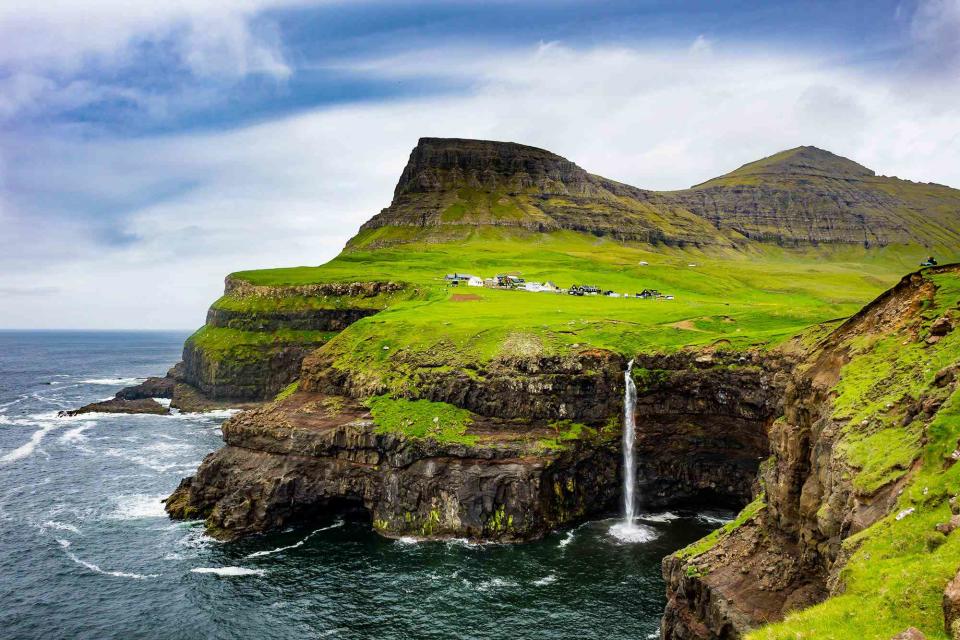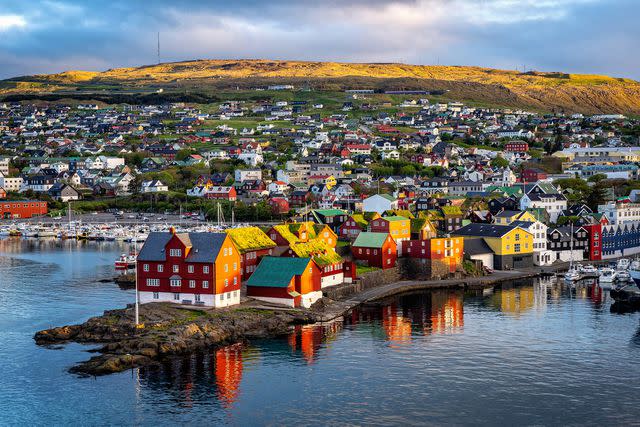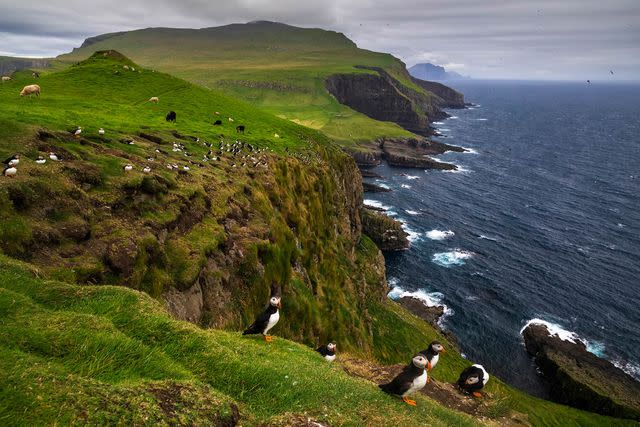This Island Destination in the North Atlantic Has 5 Traffic Lights and More Sheep Than People — and It's Getting a Direct Flight From New York
Atlantic Airways launches a flight from New York to the Faroe Islands this summer.

Westend61/Getty Images
Situated halfway between Iceland and Norway in the frigid North Atlantic, the semi-autonomous, 18-isle Faroe Islands have been historically isolated. But this summer, that's changing — slowly but surely.
In 2020, the first international hotel brand opened in the Faroes, a Hilton property in the capital of Tórshavn. There has been a smattering of new boutique hotels, too, such as the 14-room Havgrím Seaside Hotel with picturesque views of Tórshavn's neighboring island, Nólsoy. Atlantic Airways, the flag carrier of the archipelago, took delivery of a modern narrowbody plane in 2019, an Airbus A320neo.
On their own, these don’t feel like jaw-dropping developments. However, for an island nation of just 50,000 residents, five traffic lights, and more sheep than people (seriously, there are 70,000 sheep), a few new hotels and one aircraft are major changes in a few short years.

1Tomm/Getty Images
A New Nonstop Flight to the U.S.
Now, this may be the Faroes’ biggest travel news yet.
For those looking to get to the Faroe Islands nonstop, Atlantic Airways confirmed it will start flying the nation’s first transatlantic route between Vágar Airport and New York. (The catch here is that “New York” is Newburgh’s Stewart Airport, located 70 miles north of New York City.) The flight, covering a distance of 3,024 miles, will take around six hours in each direction onboard an all-economy-configured Airbus A320neo. Sorry, no lie-flat seats here.
Seasonal service will commence with once-weekly flights from mid-August through early October. Sales are set to start on May 15. Currently, Atlantic Airways only serves four destinations year-round with a fleet of three Airbus aircraft: Billund, Denmark (BLL); Reykjavík (KEF); Oslo (OSL); and Copenhagen (CPH).
While a once-a-week service between New York and the Faroes for a three-month span is limited, that’s seemingly intentional. The route puts the Faroe Islands on a global (and more prestigious) stage, one where it was emerging right before the pandemic. The archipelago saw double-digit tourism growth in 2019.
Practically speaking, Atlantic Airways has a small fleet of planes, and tourism in the Faroes is still a relatively nascent industry. The country’s infrastructure, while impressive (i.e. there’s a subsea tunnel network that connects most of the islands, including the world’s first underwater roundabout), doesn't particularly catered to tourists just yet. But that’s exactly the appeal of the Faroes. It’s one of the rare places in the world that still feels relatively untouched.
I spent a week in the Faroe Islands in 2019, and thanks to awe-inspiring natural beauty and an unpretentious, genuine sense of hospitality, it was one of the most memorable places I’ve visited. In the Faroe Islands, renting a car is a must to fully capture the nation’s majesty — and to easily go from remote village to remote village. The government designates extra-beautiful stretches of roads as “buttercup routes” and the advanced tunnel and ferry system means the islands are well-connected. Imagine a bend in the road where a double rainbow majestically emerges above a fjord, and a cascading waterfall plunges off a cliff, out of view, and into the Atlantic.

Anton Petrus/Getty Images
In the Faroes, my friend and I were often the only ones on our hikes. And it seemed like everywhere we looked, every corner we rounded, or every mountain we climbed, there was a rainbow. Our only companions? Sheep.
For more Travel & Leisure news, make sure to sign up for our newsletter!
Read the original article on Travel & Leisure.

